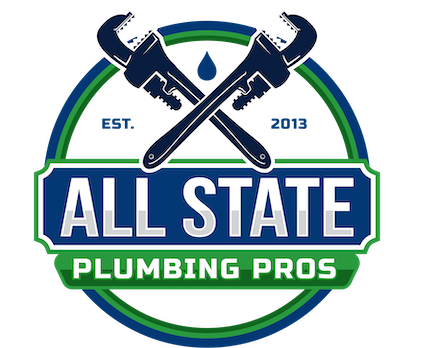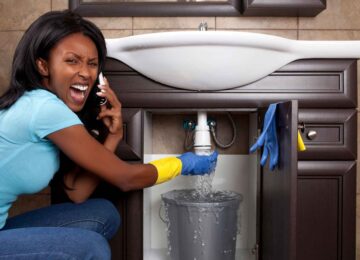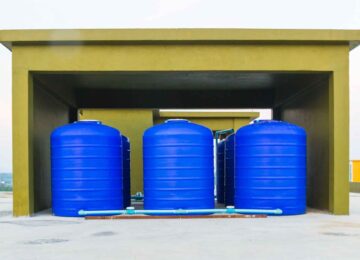A dirty or clogged sink drain can be more than just an inconvenience; it can lead to lingering odors, slow drainage, and long-term plumbing damage if not addressed. Whether it’s in the kitchen, bathroom, or utility area, your sink drain collects all kinds of residue: food particles, soap scum, grease, and even hair clogs. Over time, these substances accumulate and form a sticky, nasty buildup that slows water flow and causes unpleasant smells. Learning the best way to clean sink drain systems in your home is essential to maintaining fresh, functional plumbing and avoiding costly repairs.
Finding the best way to clean a sink drain means balancing safety, effectiveness, and ease. Harsh chemical cleaners might promise quick fixes, but they can damage pipes or harm the environment. That’s why many homeowners now prefer a combination of natural solutions, such as baking soda, white vinegar, and boiling water, along with occasional professional maintenance for deeper issues.
In this guide, we’ll walk you through why your drain gets dirty, the most effective DIY methods, what to avoid, and when it’s time to call a plumber. Let’s break it down.
What Causes Sink Drains to Get Dirty or Clogged?
Sink drains, especially in the kitchen or bathroom, are frequently exposed to substances that don’t wash away cleanly. When left unchecked, they can coat the inside of your pipes, block your drain plug, and eventually restrict water flow.
Here are some of the main culprits behind a clogged or smelly sink drain:
- Grease and fat from pans and stovetop cleanup solidify as they cool, sticking to the inner walls of the drain.
- Food scraps, like rice or coffee grounds, can settle at the bottom of the kitchen drain and decompose.
- In bathroom sinks, hair, toothpaste, and soap residue create a sludge that traps other debris.
- Garbage disposals, when not maintained, develop buildup inside the grinding chamber, causing foul lingering odors.
- Biofilm, a sticky layer of bacteria and waste, can form inside the pipes and release a persistent, stinky drain smell.
Over time, these materials not only lead to unpleasant smells and slow drainage but can also contribute to pipe corrosion or leaks. That’s why it’s crucial to regularly clean and maintain your sink drain before it escalates into a major plumbing issue.
Best Way to Clean a Sink Drain (DIY Method)
When you’re dealing with a smelly, clogged, or slow-draining sink, there’s a proven natural method that’s safe for your plumbing system and effective at clearing buildup. This approach combines baking soda, white vinegar, and boiling water, common household items that clean without damaging your pipes.
Step-by-Step Instructions
To achieve the best results, follow these steps in order. Each part of the process plays a specific role in breaking down and flushing out the buildup.
- Pull out the drain stopper and clean it: Start by removing the stopper and scrubbing off any visible gunk or soap residue. This part often traps hair, soap, and debris that contribute to drain odors.
- Pour boiling water into the drain: Heat a pot of water on the stove until boiling, then carefully pour it down the drain. This helps soften grease, fat, and soap scum that’s lining the pipes.
- Add 1 cup of baking soda: Use a funnel or spoon to send the baking soda deep into the drain. It will help neutralize odors and break down organic matter.
- Pour 1 cup of white vinegar: Slowly pour vinegar into the drain. You’ll hear it fizz, a chemical reaction that helps lift grime from pipe walls.
- Cover the drain and wait for 10–15 minutes: Place a drain plug or a cloth over the opening to trap the bubbling reaction inside the pipe. This gives the mixture time to clean thoroughly.
- Flush with more boiling water: After the fizzing stops, rinse the drain with another round of boiling water to clear away loosened residue.
- Scrub with a drain brush if needed: For stubborn buildup, gently insert a brush or bent wire into the drain to remove stuck-on grime. Be careful not to scratch the pipes.
This entire process takes about 30 minutes and can restore a fresh-smelling, fast-draining sink without the need for chemicals.
Cleaning With Commercial Products: What to Know
Store-bought drain cleaners may seem like an easy fix, but they come with pros and cons. Many contain harsh chemicals designed to dissolve clogs quickly, but they can be damaging, especially in older or PVC plumbing systems.
Pros and Cons of Chemical Drain Cleaners
- Pros:
- Fast-acting for hair or grease clogs
- Widely available at hardware and grocery stores
- Easy to use (just pour and wait)
- Cons:
- It can corrode pipes over time
- Dangerous if mixed with other cleaners
- Harmful to the environment and septic systems
- Not always effective for deep or recurring clogs
According to professional plumbers, chemical drain cleaners should be a last resort and should never be used in combination with natural cleaners like vinegar or baking soda, as this may cause toxic reactions.
If you’re going to use one, choose a gel-based, non-acidic cleaner and follow the label’s safety instructions carefully. Always ventilate the area and avoid contact with skin or eyes.
When to Call a Plumber for Drain Cleaning
While many DIY methods work well for surface-level issues, some problems go deeper and require professional intervention. Ignoring ongoing issues can lead to more serious damage, such as cracked pipes, water leaks, or even mold growth inside walls.
Signs You Need a Plumber:
- Clogs that keep coming back even after cleaning
- Slow drainage in multiple sinks
- Bubbling or gurgling sounds when water flows
- Odors that persist even after deodorizing
- Visible leaks, dampness, or signs of water damage under the sink
If you live in an older home in areas like Fairfield County or Westchester County, outdated plumbing may make your system more vulnerable. A professional plumber can perform a full inspection, use a drain snake or camera system, and suggest long-term fixes or replacements if needed.
How to Prevent Future Sink Drain Buildup
Routine maintenance is the key to avoiding future clogs and odors. Most buildup can be avoided with consistent habits and a little monthly upkeep.
Prevention Tips to Keep Your Drains Fresh:
- Avoid pouring oil, grease, or fat down the sink. Let them solidify and throw them in the trash.
- Install a sink strainer to catch food particles, hair, and debris.
- Rinse the drain with boiling water once a week to melt away residue.
- Use lemon juice or baking soda monthly to deodorize.
- Run cold water when using the garbage disposal to prevent food from sticking.
- Clean your disposal blades with ice cubes and citrus peels.
- Use enzyme-based cleaners (not harsh chemicals) every few months for a deeper clean.
Maintaining your kitchen sink drain and bathroom sink drain is far easier than fixing a full clog. A little prevention can go a long way in keeping your plumbing running smoothly.
Sink Drain Cleaning Methods Comparison Table
| Method | Pros | Cons | Best For |
|---|---|---|---|
| Baking soda + vinegar | Natural, safe, odor control | May not work on tough clogs | Routine cleaning |
| Boiling water | Quick, effective on grease | Not ideal for plastic pipes | Grease buildup |
| Drain brush | Removes physical debris | Requires access to the drain | Hair and soap residue |
| Chemical cleaners | Fast results | Harsh, may damage pipes | Emergency clogs only |
Conclusion
A clean sink drain isn’t just about appearances; it’s essential for a healthy home and a well-functioning plumbing system. By learning the best way to clean a sink drain using natural methods like baking soda, vinegar, and boiling water, you can tackle common buildup without relying on harsh chemicals. Regular maintenance not only helps prevent clogs, odors, and grease accumulation but also extends the life of your plumbing.
That said, when DIY methods no longer do the trick, or when clogs and smells keep coming back, it’s time to call in a professional. At All State Plumbing Pros, we’re here 24/7 to help homeowners across Connecticut and New York solve drain issues quickly and safely.
Whether you’re dealing with a stubborn clog or just want your drains to smell fresh again, contact us today for reliable, expert service.
FAQs
What is the best thing to clean sink drains with?
The best solution is a mix of baking soda, white vinegar, and boiling water. It’s safe, eco-friendly, and effective for regular maintenance. For deeper buildup, a drain brush or enzyme cleaner can help.
How do you clean a smelly sink drain?
To remove odor from a smelly drain, clean the stopper, pour baking soda followed by vinegar, cover the drain, and let it sit for 15 minutes. Rinse with hot water or boiling water to flush away debris and bacteria causing the smell.
Is baking soda and vinegar better than Drano?
Yes, especially for maintenance cleaning. Baking soda and vinegar are safer for pipes, non-toxic, and ideal for monthly use. Drano and other chemical products should be used sparingly and only in severe cases due to their corrosive nature.
How long do I leave baking soda and vinegar in the drain?
Let the mixture sit for 10 to 15 minutes. This allows the chemical reaction to break down grime and odors inside the drain. After that, flush thoroughly with boiling water.

![Best Way to Clean a Sink Drain: Safe DIY & Pro Tips A dirty or clogged sink drain can be more than just an inconvenience; it can lead to lingering odors, slow drainage, and long-term plumbing damage if not addressed. Whether it’s in the kitchen, bathroom, or utility area, your sink drain collects all kinds of residue: food particles, soap scum, grease, and even hair clogs. Over […]](https://allstateplumbingct.com/wp-content/uploads/2025/08/Best-Way-to-Clean-a-Sink-Drain-Safe-DIY-Pro-Tips-750x420.jpg)



Leave a Reply